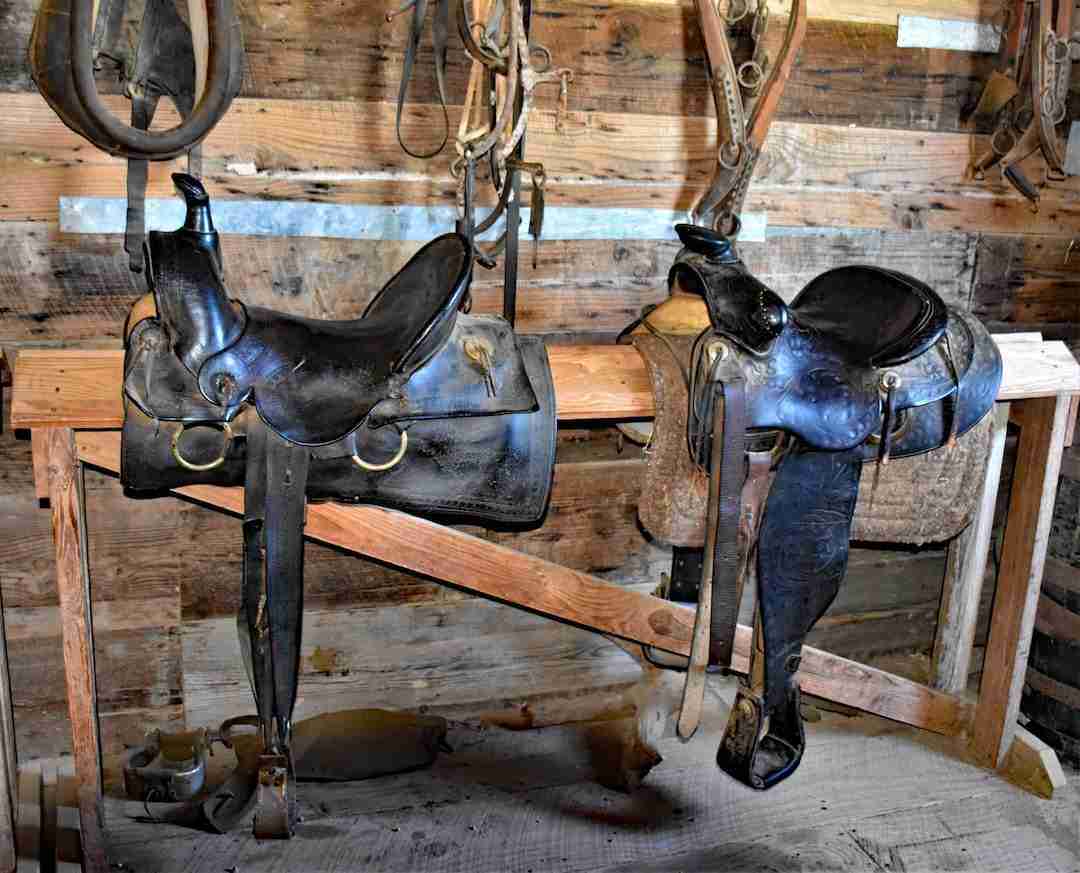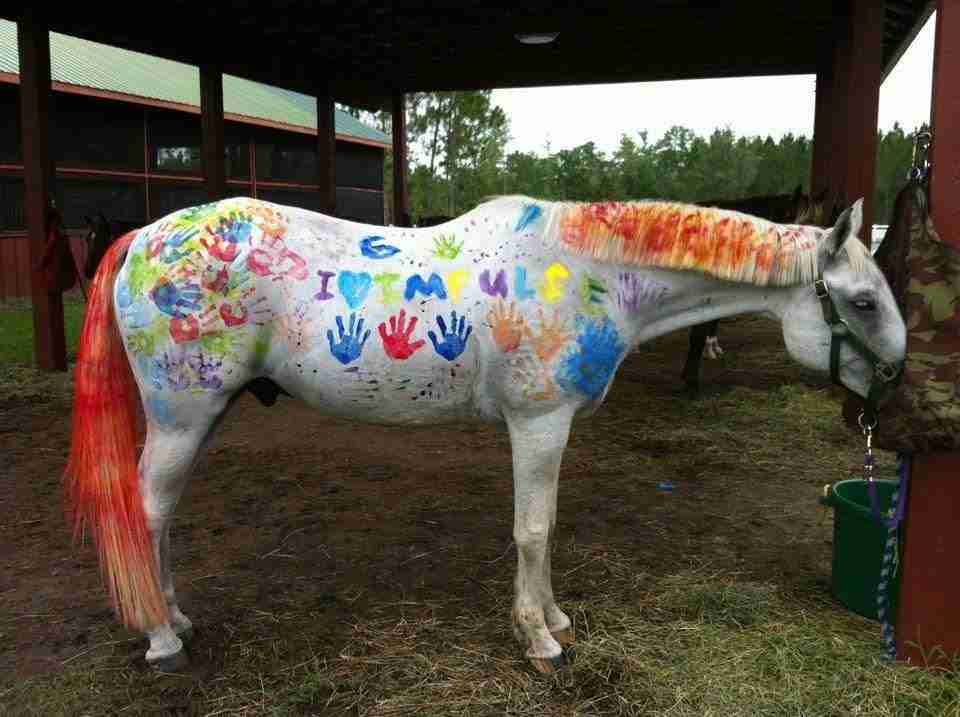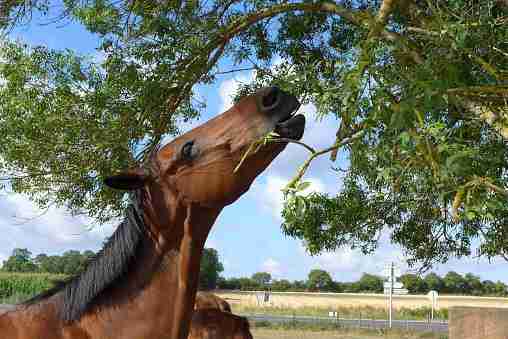Any horse is beautiful in its unique way, but many would agree that a long-haired horse breed can melt anyone’s heart. You might have seen them in a movie, on the side of the road in a field, and the majestic look of long hair waving in the air while they gallop away is quite a scene.
There are many horse breeds with long hair and furry feet. Some have both; others only have long hair. Either way, their long hair needs more maintenance to keep it untangled and from looking weathered. All horses have the gene to grow long, shaggy hair on their feet; some get activated due to the environment.

1. Long-Haired Horse Breeds: Clydesdale
The Clydesdale horses are one of the most famous horses out there. They are initially from Scotland, and historians found the first recordings of their existence in the late 1800s. The featherings on their feet protect them from the harsh Scottish winters. They stand tall at about 17 hands (68 inches) and have statement furry feet with long manes.
You can find Clydesdales in different colors, with bay or brown being more popular, but black is also available. White markings compliment these colors, usually on the face, lower belly, and furry feet. People used them to do heavy workloads and farming, as they were robust and extensive.
Because of their majestic look and white stockings, producers love to use Clydesdale horses in movies, television series, and advertisements. One of these is the Budweiser advert. Also, the British Calvary used them as drum horses.
Clydesdales have enormous hooves the size of plates. These are in proportion with their bodies and do not look strange. However, the racing type of horses’ hooves is much smaller to be more light-footed.
They need more food and water than an average-sized horse for their size. Clydesdales eat about 40 pounds of hay and 8 pounds of nutritious grain daily.
Owners need to groom these beasts regularly, and firstly their size might increase your time grooming, and secondly, their long hair. These furry horses also need special attention around their hooves to reduce skin irritations and infections.

2. Long-Haired Horse Breeds: Friesian
Friesians are a vision to see and make you catch a breath at first sight. Usually all black, with a small white star shape on the forehead, and thick manes and tails, the Friesian breed is quite spectacular. They have a slight feathering visible on the feet but not as profound as the Clydesdale.
They are high-maintenance horses with a few genetic disorders but great for beginners or advanced riders. They have a cool, calm, and pleasing temperament and do good in dressage or athletic events. They are, on average, 15 hands (60 inches) but can grow taller and weighs 1300 pounds.
Interestingly, Friesians date way back to the 1200s when the people used them in battle, and knights would ride them. The main reason might be because they are easy to teach and do not spook easily.
Friesians need ample amounts of vitamins and minerals to keep their coats shiny. In addition, they need a lot of food to keep their energy up and a high protein diet to maintain their muscles.
The black, shiny coat and long tail waving in the wind doesn’t look like that by chance. Unfortunately, a lot of bathing and combing is necessary, not only for the long hair but also because of their dry skin. Try to avoid too much sunlight as this can bleach their coats.

3. Long-Haired Horse Breeds: The Shire
The Shire horse is also very tall and muscular and reaches a height of about 18 hands (72 inches). They have similar furry legs to the Clydesdale and also a hairy face. Their usual color combination would be black, bay, and grey with white or lighter legs and a stripe on their front.
They are powerful and can pull a lot of weight, which is why historian knights used them for war, and farmers also used their strength to help with workloads. They can haul 45 tons and even more, which can be pretty handy for workloads.
The biggest horse ever measured was a Shire called Mammoth with a height of 21,25 hands (100,8 inches) and weighing over 3000 pounds. Another fun fact is that the earliest recording of Shire horses is way back in 1145.
When grooming your Shire, thoroughly clean the fluff around their feet and dry it completely. Keeping the feet clean, dry, and untangled will keep bacteria and fungi from building between the fibers and causing infections.
4. Long-Haired Horse Breeds: Swedish Northern Horse
The name states that these horses originated in Sweden in the early 1900s. The Swedish Northern Horse is not as tall as the ones mentioned, but they are strong. They can grow up to 15 hands (60 inches) and weigh around 1700 pounds.
The most popular colors you will see on a Swedish Northern horse would be black, buckskin, or palomino. However, grey, chestnut, brown, and dun are available; their feet can be different colors.
They are primarily working horses and don’t require as much maintenance. They are loyal, hard-working horses and intelligent. These horses grow a winter coat and a broader tail to keep them from the cold. Grooming is essential to keep their hair sleek, shiny, and healthy.
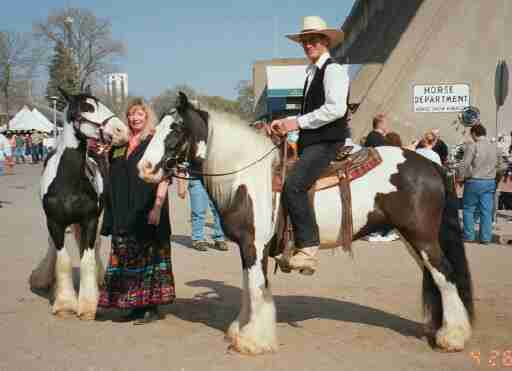
5. Long-Haired Horse Breeds: Gypsy Vanner
A Gypsy Vanner might immediately steal your heart with its long mane, tail, and furry heels. The striking black and white color is beautiful and can be visible in piebald. Other colors are skewbald, which refers to any dark color with splashes of white, or when the white color is on the belly, they call it Blagdon.
They are a short breed varying between 12 and 15 hands (48 to 56 inches) but powerful enough to pull slays and cartridges. Their diets are essential, as they can quickly gain weight if their owners do not monitor meals. When grazing, it would be best to add a grazing muzzle to ensure they don’t overeat.
Gypsy’s used them to pull their cars or caravans, but lately, they are shown or used in parades, and some compete in dressage competitions. They have a friendly dominion and are easy to teach, making them a great addition to any family.
Grooming is extensive, and the owner must spend time and effort to keep their luscious hair at bay. In addition, the feathering around their feet can easily stain if not maintained. By sticking to a grooming routine, there won’t be times of struggle, and your horse will be happy and content.
Other Article You Maybe Interested In:
- How Often Do Horses Go Into Heat and When Do They Start?
- Quarter Horse vs Thoroughbred: What is Best?
- Do Hairless Horses Exist?
- What Is Live Cover Horse Breeding?
- Famous Red Roan Horses and Their Color Genetics. Metallic Cat, anyone?
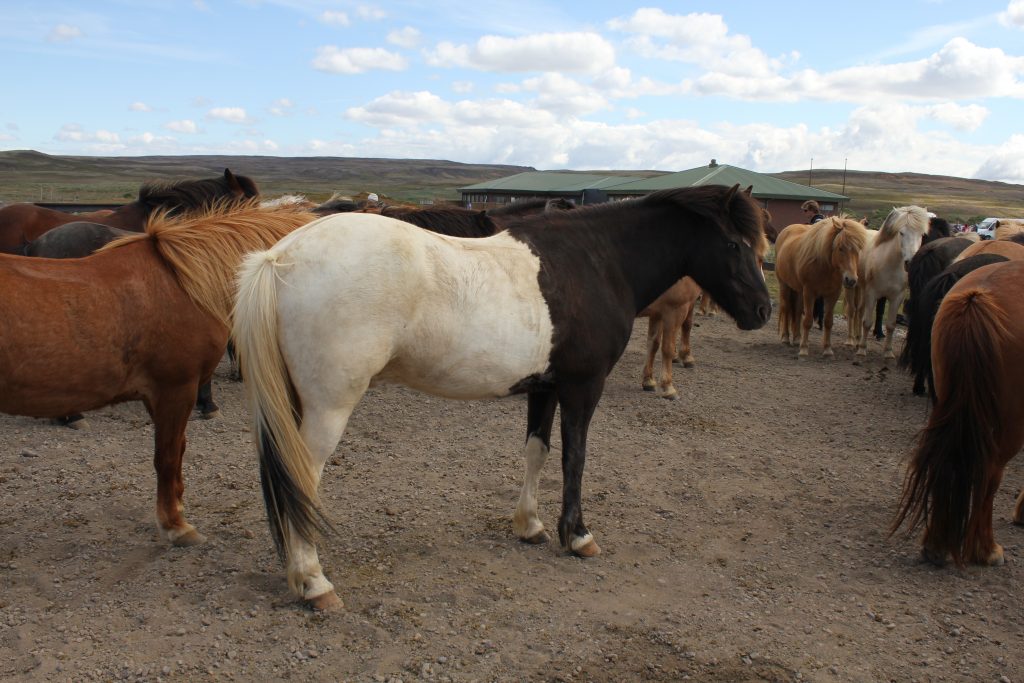
6. Long-Haired Horse Breed: Icelandic horse
These horses are geared for the cold, as you can imagine from the name. They have a double coat, thick tail, and long mane. They date back to 860 AD when they arrived on a Viking ship. Icelanders used them mainly for riding, primarily because of their gait called “flying pace,” which leads to a smooth ride at 30 miles per hour.
Some interesting facts come into play when talking about the colors of the Icelandic horse. First, there are so many colors, and there are around forty colors recorded. These are only primary colors and can have markings that portray a unique twist. Second, the Icelandic people believe that the horse’s color has something to do with their personality.
They are more miniature horses, between 13 and 14 hands (52 and 56 inches) but have a broad build, making them great for riding. They are not spooked easily and live very long – around 50 years.
Icelandic horses have high maintenance when it comes to grooming needs. They have thick coats, and their thick tails and manes can quickly tangle and get filthy, especially in wet weather. Therefore, you will need all the grooming tools and clean them regularly to prevent illness in dirty hooves and pain to get the tangles out.
7. Long-Haired Horse Breed: Australian Draft Horse
The Australian draft has a long history. It is a horse that combines four other breeds to make it the kind of horse the Australians needed in the 1800s. This horse has Shire, Percheron, Suffolk Punch, and Clydesdale blood running through its veins.
In the old days, the Australians used oxen to carry heavy loads, helping with forestry and farming. However, they were very slow, and when the gold rush came, everyone needed something faster and more fitting to help with the loads and moving a family’s caravan around.
Breeders bred these four breeds together to create the perfect breed they needed. The Australian draft is 16 to 17 hands (64 to 68 inches) tall and weighs around 1800 pounds. They have broad hips and are pretty strong. The feathered feet and long manes are traits they got from the Shire and Clydesdale genes.
You will see them in solid colors but not in white. The only white might be visible on their lower legs or tummies. No white color is because they can quickly get sunburn. Today they are used for riding, helping in farming, or even showing off their long and luscious tails and manes.

8. Long-Haired Horse Breed: Ardennais
From the Ardennes in Rome, these horses are the oldest draft horses recorded. Their shape and form might have changed over the years to fit the environment and people’s needs, but they are great at drafting.
You can find them in roan, chestnut, grey, or palomino colors. White markings are possible but not prominent. A color you won’t see on Ardennes (or Ardennais) is black, but it is not impossible. They are 16 hands (64 inches) tall and weigh around 2000 pounds. With this robust and muscular build, their fluffy feet and swoosh tail give a softer touch to the image.
They have tiny hooves and small ears compared to their bodies. They are obedient, friendly, and patient animals, which you want in a draft horse. They need attention from their owner, love to be around people, and don’t mind hard work.
The featherings around their hooves require attention to keep them healthy and clean. Too much mud and wetness can cause problems when left with no grooming.

9. Long-Haired Horse Breed: Black Forest Horse
This draft horse is one of the few that has no furry feet but makes up for the lack by its flowy signature mane. The Black Forest Horse’s name comes from its origin: The Black Forest in Germany. Here the people used them for farm work and driving.
There are only 700 mares registered in the USA, making this a horse breed that you probably won’t ever see – if you do, consider yourself lucky. They are usually chestnut-colored and can vary in shades until they seem black. Their manes are a lighter, flaxen color making this rare species quite a sight.
They are well-mannered and get along with people. In addition, they have a beautiful stride, making them fit to ride. They are average height, 14 to 15 hands (56 to 60 inches), and weigh between 1200 and 1400 pounds.
The Black Forest Horse requires extra attention regarding their thick manes and tails. Braiding is an option, as well as a good quality conditioner and detangler spray.
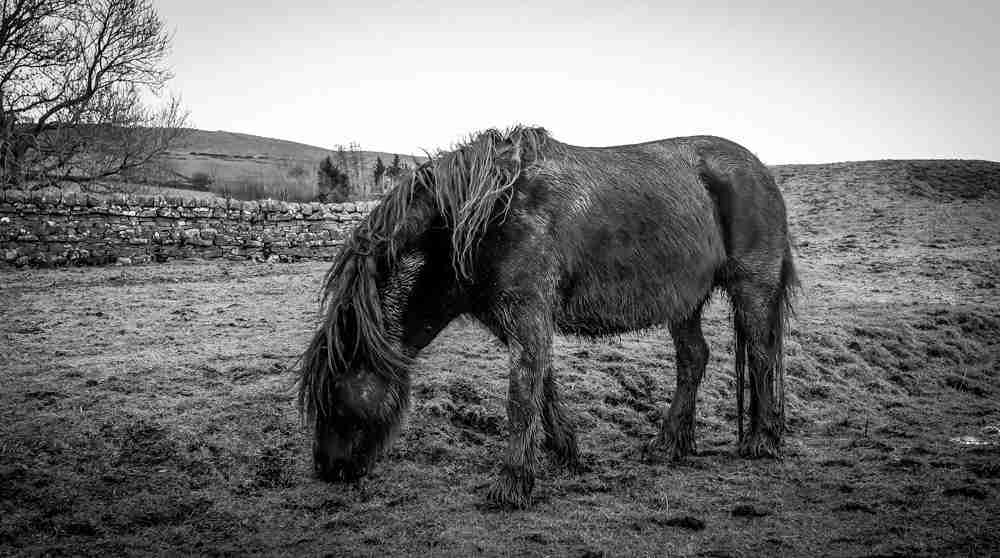
10. Long-Haired Horse Breed: Dales Pony
It might be smaller than the other horses mentioned, but the Dales Pony doesn’t lack class, style, or hair. The England-originated pony has a long and lush tail, mane, and delicate featherings on the legs. Primarily, they are black but can also be other dark solid colors like roan or brown.
They are powerful for their size of 1000 pounds and 14 hands (56 inches). They can carry a weight of 220 pounds easily and will not mind doing so. They also have incredible speed, and riders love showing their beautiful Dales ponies in shows and races.
The Dales pony is calm and collected, has a bold and courageous attitude, and doesn’t wither under stress. They are great companions for any person, whether a trainer or beginner rider.
Grooming is essential regarding the Dales pony’s thick wavy mane. They need special attention when they double up on their hair in the winter months. Most owners choose to braid the hair to keep it smoother for longer.
Conclusion
Whether you want to know all about hairy horses or consider buying one, all these are well-tempered and would be perfect for any household. Be sure to understand their grooming requirements, as luscious hair comes with more responsibility to keep them clean and healthy. Their pricing might differ immensely according to their availability and popularity.
Resources
https://petkeen.com/horse-breeds-with-long-hair-feathered-feet/
https://www.thesprucepets.com/black-forest-horse-profile-5080190#toc-grooming
https://www.thesprucepets.com/friesian-sport-horse-breed-profile-5113206
https://www.thesprucepets.com/learn-about-the-shire-horse-breed-1886127#toc-grooming






